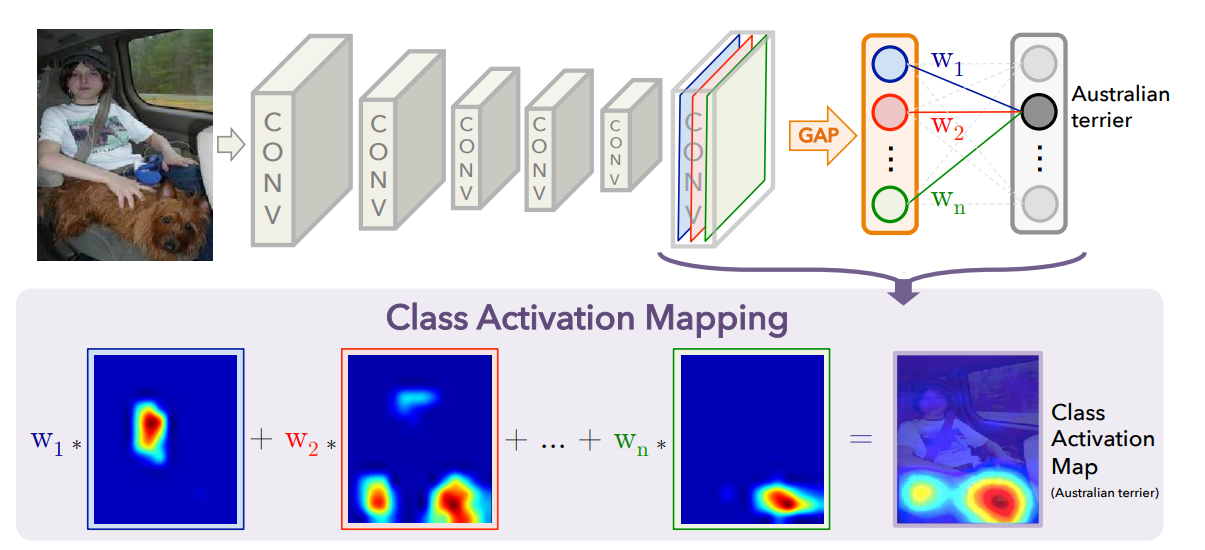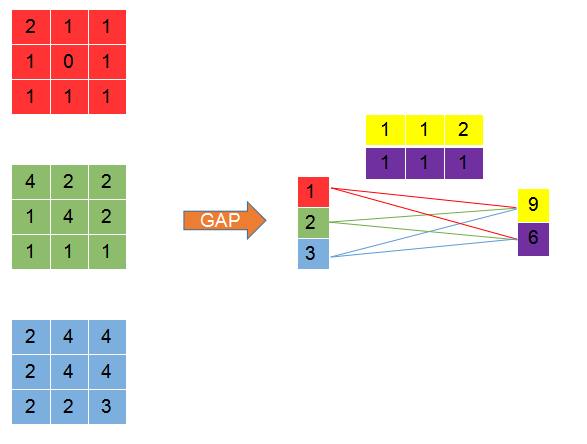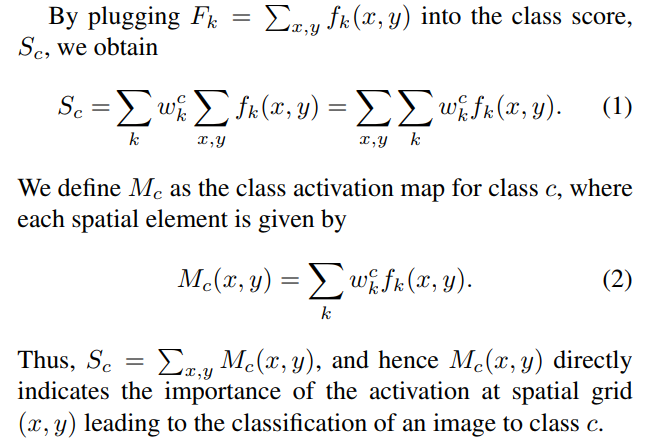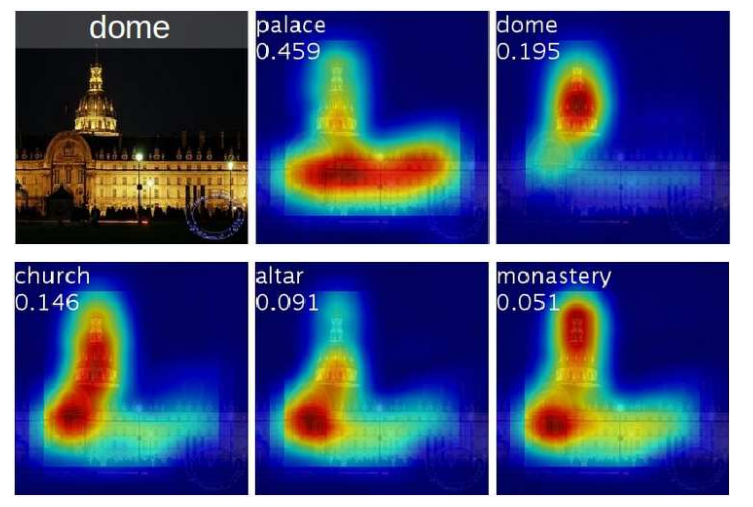CAM出自于论文 Learning Deep Features for Discriminative Localization(CVPR2016)
以热力图的形式展示,模型通过哪些像素点得知图片属于某个类别。

论文中原句:before the final output layer (softmax in the case of categorization), we perform global average pooling on the convolutional feature maps and use those as features for a fully-connected layer that produces the desired output (categorical or otherwise)
关于GAP(Global Average Pooling),详见另一篇博客:https://blog.csdn.net/qq_21097885/article/details/90018322

举个例子,卷积最后得到的特征图为
。
第一个特征图经过GAP(Global Average Pooling),得到
。同理,第二个特征图经过GAP得到2,第三个特征图经过GAP得到3。
经过全连接层,得到二分类的结果为(9, 6).
Softmax之后,得到(0.6, 0.4).

仔细分析一下,二分类结果中9是如何得到的。
也就是
写为
即,

各个像素点对最后分类为第一类的贡献值为
这样,就可以得到热力图了。最后,将该热力图暴力展开成所需要的大小即可。叠加到原图中,就可以观察模型得到的分类结果关注于图片中哪个区域了。
对应论文中解释

下图中图片的标签是“圆顶”。五张类激活映射分别是前五名预测的类别和得分。可以看到,预测为“宫殿”时,模型关注于整个区域。预测为“圆顶”时,模型只关注于宫殿顶部。

源码:https://github.com/metalbubble/CAM
缺陷:必须改变网络结构,例如把全连接层改成全局平均池化层。
后出现改进的技术Grad-CAM,详见这篇论文 Grad-CAM: Visual Explanations from Deep Networks via Gradient-based Localization ( ICCV2017)。
